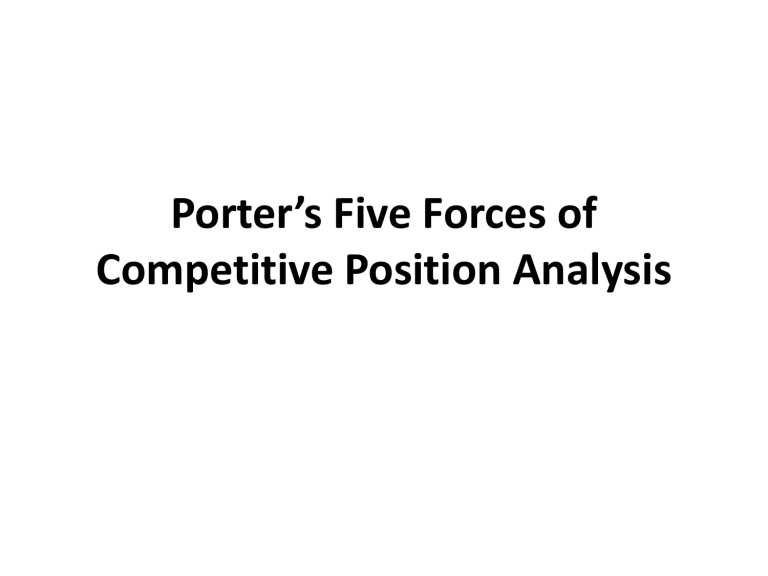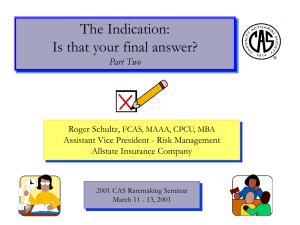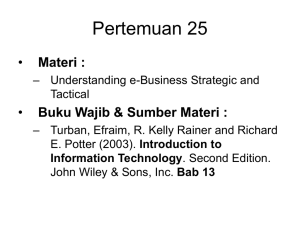
Porter’s Five Forces of Competitive Position Analysis Framework/Theory • Developed in 1979 by Michael E Porter of Harvard Business School. • Simple framework for assessing and evaluating the competitive strength and position of a business organisation. • Based on the concept that there are five forces that determine the competitive intensity and attractiveness of a market. Framework/Theory • Strategic analysts often use Porter’s five forces to understand whether new products or services are potentially profitable. • By understanding where power lies, the theory can also be used to identify areas of strength, to improve weaknesses and to avoid mistakes. Porter’s Five Forces 1. Supplier power. An assessment of how easy it is for suppliers to drive up prices. This is driven by the: number of suppliers of each essential input; uniqueness of their product or service; relative size and strength of the supplier; and cost of switching from one supplier to another. 2. Buyer power. An assessment of how easy it is for buyers to drive prices down. This is driven by the: number of buyers in the market; importance of each individual buyer to the organisation; and cost to the buyer of switching from one supplier to another. If a business has just a few powerful buyers, they are often able to dictate terms. Porter’s Five Forces 3. Competitive rivalry. The main driver is the number and capability of competitors in the market. Many competitors, offering undifferentiated products and services, will reduce market attractiveness. 4. Threat of substitution. Where close substitute products exist in a market, it increases the likelihood of customers switching to alternatives in response to price increases. This reduces both the power of suppliers and the attractiveness of the market. 5. Threat of new entry. Profitable markets attract new entrants, which erodes profitability. Unless incumbents have strong and durable barriers to entry, for example, patents, economies of scale, capital requirements or government policies, then profitability will decline to a competitive rate. What benefits does Porter’s Five Forces analysis provide? Five forces analysis helps organisations to understand the factors affecting profitability in a specific industry, and can help to inform decisions relating to: whether to enter a specific industry; whether to increase capacity in a specific industry; and developing competitive strategies. Actions to take / Dos Actions to Avoid / Don'ts •Use this model where there are at least three competitors in the market •Consider the impact that government has or may have on the industry •Consider the industry lifecycle stage – earlier stages will be more turbulent •Consider the dynamic/changing characteristics of the industry •Avoid using the model for an individual firm; it is designed for use on an industry basis https://www.isc.hbs.edu/strategy/businessstrategy/Pages/the-five-forces.aspx https://www.cgma.org/resources/tools/essentia l-tools/porters-five-forces.html




